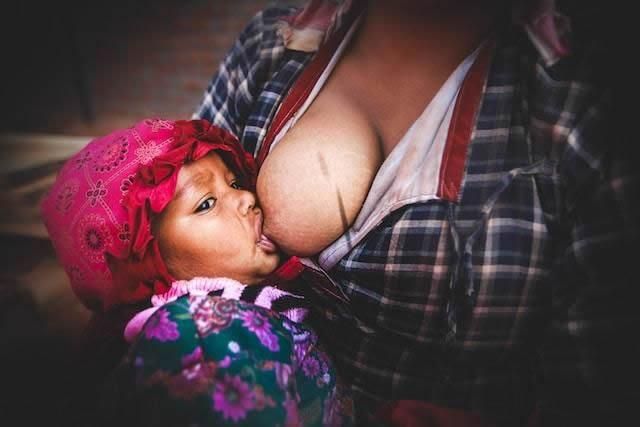
Therapeutic Breast Massage in Lactation Can Help Make Breastfeeding Less Painful
Breastfeeding is widely accepted as the normal standard for providing nutrition to newborns, however, many women who do not reach their breastfeeding goals. US national data stated that breast pain was a commonly reported reason for women weaning less than 1 month postpartum. Within that segment, 29% of women who participated in the study stated that “breastfeeding was too painful” to continue.
In the same study, 24% of women reported “breasts feel(ing) too full or engorged” as another reason to discontinue breastfeeding prior to 1 month postpartum.1 Currently, The American Academy of Pediatrics recommends exclusive breastfeeding of infants for the first six months of life. As physical therapists who treat patients with postpartum conditions, we are well positioned to make a big impact on patients with breastfeeding related pain and reduce barriers to continued breastfeeding!
Therapeutic Breast Massage in Lactation (TBML) is a specific type of manual therapy that specially trained providers can perform to relieve pain and excessive engorgement related to breastfeeding. What’s even better is that your physical therapist at Femina Physical Therapy can teach you how to perform this massage yourself to prevent more pain in the future!
First, let’s get familiar with different types of breastfeeding related conditions.
The common attribute among these conditions is that they are typically caused by milk stasis or inadequate removal of milk from the breast:
- Engorgement: Uncomfortable swelling of the breast associated with increased milk secretion
- Blocked Milk Ducts: Engorgement can lead to inflammation surrounding the milk duct, causing the duct to collapse and stop the flow of milk. This can sometimes form a tender lump in the breast. A milk bleb may form in the appearance of a small, white bump on the nipple.
- Mastitis: Inflammation of the breast. It may be non-bacterial or with a bacterial infection of the breast. It is associated with a hard, red and swollen part of the breast. Systemic symptoms can be present including fever, chills and body aches. When infection is present, it must be treated by antibiotics prescribed by your provider prior to being treated in physical therapy.
Traditionally, therapeutic breast massage for the alleviation of blocked milk ducts has involved deep, painful massage strokes towards the nipple. What we now know about engorgement and blocked milk ducts is that inflammation surrounding the duct is the culprit. Our lymphatic system is responsible for moving inflammation throughout the body, and this system lives directly under the skin and gets suppressed by the use of deep pressure. By performing light massage strokes opposite to the flow of milk, we can encourage lymphatic flow to reduce inflammation, giving milk ducts room to allow for adequate flow.
Therapeutic Breast Massage in Lactation Step by Step:
Step 1: Stimulate your lymphatic system
- Close your eyes. Take 10 long diaphragmatic breaths into your low belly. Perform 10 gentle, circular strokes at the base of the neck. Finally, perform 10 circular strokes in the armpit.
Step 2: Perform massage on the affected breast
- With a flat palm, use broad, light sweeps starting from under the breast towards the armpit with the hand opposite to the breast you are working on. Perform this for 1-2 minutes. Use light pressure, similar to if you were petting a cat. Use enough pressure where you are moving your skin just a bit.
- Using the same broad stroke, sweep upwards from the nipple, over the chest and neck, ending at the chin. Perform this for 1-2 minutes.
- Follow your therapeutic breast massage by nursing your baby or by hand expressing.
Additional tips for therapeutic breast massage:
- Perform your therapeutic breast massage prior to every time you are expressing milk if you are dealing with a blocked duct until the blockage is cleared.
- Avoid deep and painful pressure of the breast tissue
- Consider following up your Therapeutic Breast Massage in Lactation with some cold compress as opposed to heat to reduce inflammatory process
- Consistent milk removal is key to improving symptoms!
References:
- Li R, Fein SB, Chen J, Grummer-Strawn LM. Why mothers stop breastfeeding: mothers’ self-reported reasons for stopping during the first year. Pediatrics. 2008;122(suppl):S69-S76.
- Cooper BB, Kowalsky D. Physical Therapy Intervention for Treatment of Blocked Milk Ducts in Lactating Women. Journal of women’s health physical therapy. 2015;39(3):115-126. doi:10.1097/JWH.0000000000000037
- Witt AM, Bolman M, Kredit S, Vanic A. Therapeutic Breast Massage in Lactation for the Management of Engorgement, Plugged Ducts, and Mastitis. Journal of Human Lactation. 2016;32(1):123-131. doi:10.1177/0890334415619439
